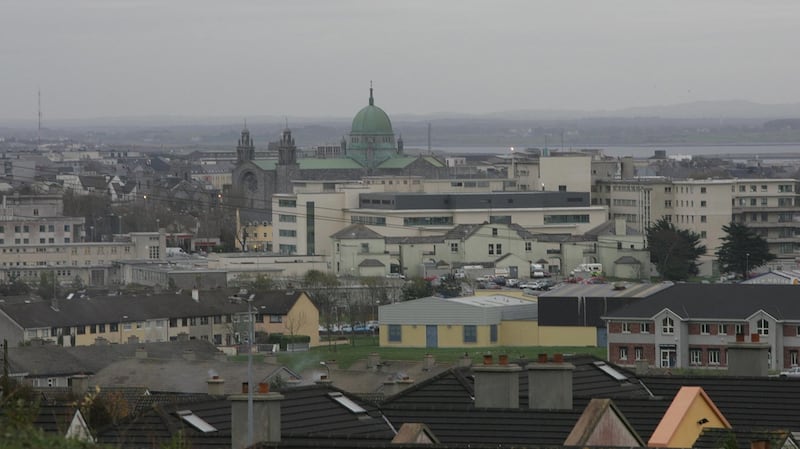In June 2014, when the current method of reporting was initiated, the number of people in emergency accommodation in the west of Ireland – Galway, Mayo and Roscommon – was 36. Three years into the Rebuilding Ireland Programme this number has risen to a staggering 556 – an increase of 1,544 per cent. While Minister for Housing, Planning and Local Government Eoghan Murphy tells us that Rebuilding Ireland is working, it certainly doesn't feel like it in the west.
Most disturbingly, the number of people in emergency accommodation in the west continues to rise at a far steeper rate than the national average – eight times faster according to the most recent figures.
An analysis of the underlying economic indicators provides no comfort – in fact, in this fourth year of the Rebuilding Ireland plan, we believe the figures are going to continue to worsen.
Galway city is the only rent pressure zone (RPZ) in the region, with rent increases theoretically capped at 4 per cent. According to the latest Daft.ie report, average rent is increasing annually by 16 per cent in Co Galway, 13 per cent in Galway city, 11 per cent in Mayo and 10 per cent in Roscommon – all multiples of the RPZ cap. And yet in a debate on TG4 last week, Fergus O’Dowd TD insisted the rent pressure zones are working.
Cumulatively, average rent in Galway city has increased from €932 in the second quarter of 2016 to €1,239 in the last quarter of 2018, an increase of 33 per cent since the Rebuilding Ireland Programme began.
With so little new social housing builds coming on stream, the west is overreliant on the private rented sector
In recent years, population growth in Galway has outstripped the increase in housing stock. With demand now far exceeding supply, the most basic of economic principles applies and the cost of buying or renting continues to increase. Under Rebuilding Ireland, the Government has introduced a number of initiatives to stimulate the housing market and increase supply. While the government asserts that these policies are working, quoting national housing output figures increasing in the thousands, CSO new dwelling completion figures clearly demonstrate that output across Galway city and county is virtually stagnant having increased by a meagre 12 to 678 units in 2018
Major mismatch
Rebuilding Ireland promises thousands of additional social housing units. Some 201 new social homes were built in Galway, Mayo and Roscommon in 2018 – too few to make any significant impact on the 5,091 households on the social housing waiting list in the region. With so little new social housing builds coming on stream, the west is overreliant on the private rented sector.

Some 79 per cent of social housing across the four local authority areas was delivered through rental accommodation scheme (RAS) and housing assistance payment (HAP) in 2018, well above the Rebuilding Ireland target of 63 per cent. Galway city was more reliant on the private rental market for the delivery of social housing than any other local authority in the country, with 91 per cent of the social housing delivered in the city coming from RAS and HAP.
There is a significant mismatch between the profile of households in need of social and affordable housing in Ireland and the type of housing being built. As an analysis by economist Ronan Lyons indicates, average household size is declining in this country due to a number of different socio-economic factors, yet we are continuing to build predominantly three- and four-bedroom, semi-detached homes. Over half of the households on the social housing waiting list in Galway city are single-person households.
Furthermore, there are a number of very positive government initiatives that require single-person units – including the delivery of Housing First and a programme to house young people coming out of care. In the last 12 months, only three one-bed apartments were sold in Galway city, far less than the local authority’s delegated sanction to purchase social housing units of this size. It is difficult to envisage at this juncture, where the housing units will come from for the delivery of these plans.
These are all quantifiable facts, hard data that can be objectively analysed.
But there is much that we cannot measure.
Hidden homeless
While the numbers sliding into emergency accommodation in the west are disturbing, we must acknowledge also that there are significant additional numbers, known as the “hidden homeless” that we are unable to quantify. These include those who are sleeping rough, in cars, in squats or involuntarily sharing.
They also include those who are residing in homeless services and domestic refuges. The scale of the crisis is actually far greater than the emergency accommodation figures suggest.
Neither can we quantify the personal human impact that homelessness, or the threat of homelessness, is having on each individual.
Nor the impact that being born into homelessness, or living with the insecurity of emergency accommodation, will have in the future on the 201 children in Galway, Mayo and Roscommon living this experience today.
Nor can we measure the impact that the ever-increasing challenge of finding solutions for people experiencing or at risk of homelessness is having on the dedicated and committed frontline teams in our local authorities, the Health Service Executive and our NGOs.
The teams in Galway Simon Community’s and Cope Galway’s emergency homeless services raised many of these issues with Eoghan Murphy when he visited Galway Simon’s emergency service in April 2018. Since then, the numbers in emergency services in the west have increased by a further 39 per cent.
Karen Golden is chief executive of Galway Simon Community










